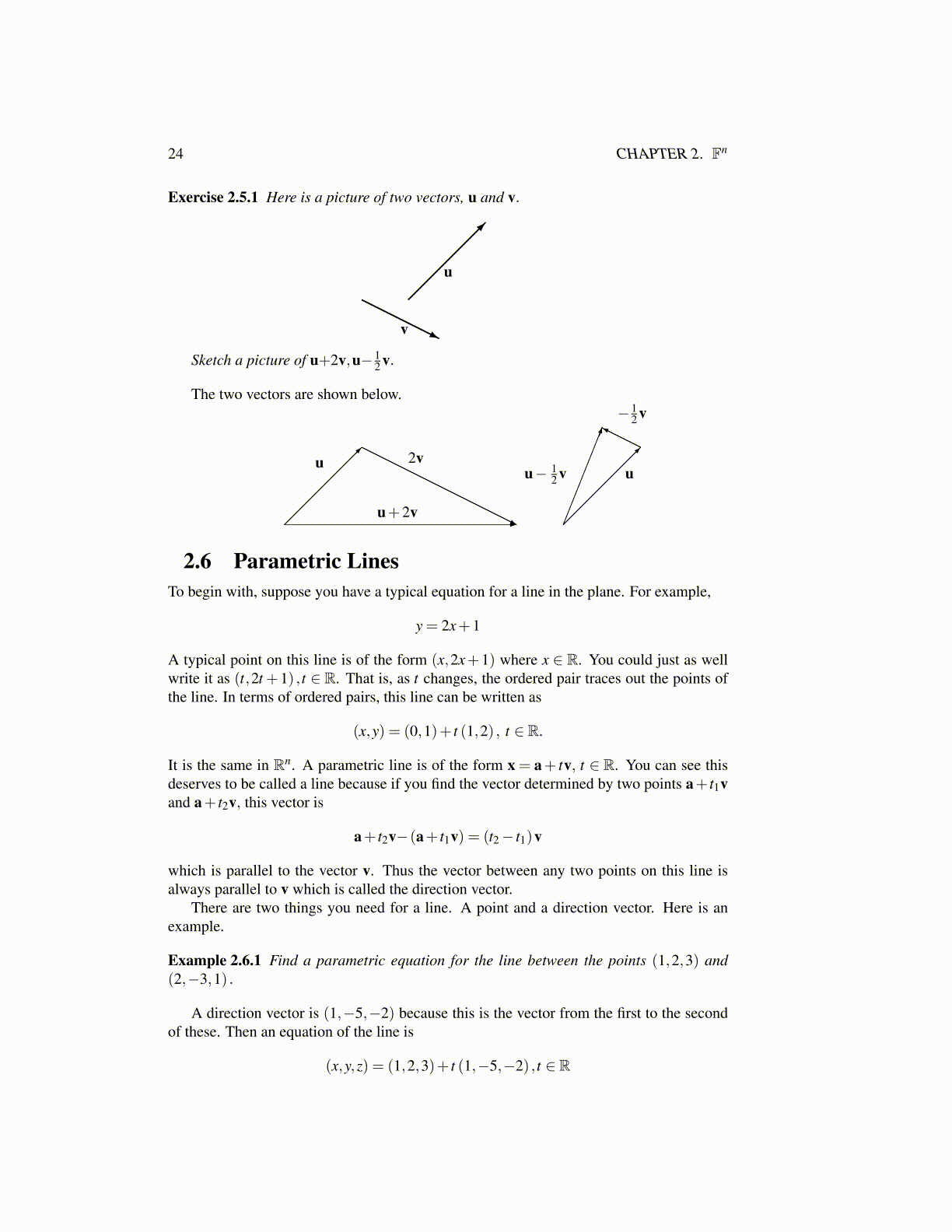
24 CHAPTER 2. Fn
Exercise 2.5.1 Here is a picture of two vectors, u and v.
u
v
Sketch a picture of u+2v,u− 12 v.
The two vectors are shown below.
u 2v
u+2v
u
− 12 v
u− 12 v
2.6 Parametric LinesTo begin with, suppose you have a typical equation for a line in the plane. For example,
y = 2x+1
A typical point on this line is of the form (x,2x+1) where x ∈ R. You could just as wellwrite it as (t,2t +1) , t ∈ R. That is, as t changes, the ordered pair traces out the points ofthe line. In terms of ordered pairs, this line can be written as
(x,y) = (0,1)+ t (1,2) , t ∈ R.
It is the same in Rn. A parametric line is of the form x = a+ tv, t ∈ R. You can see thisdeserves to be called a line because if you find the vector determined by two points a+ t1vand a+ t2v, this vector is
a+ t2v−(a+ t1v) = (t2− t1)v
which is parallel to the vector v. Thus the vector between any two points on this line isalways parallel to v which is called the direction vector.
There are two things you need for a line. A point and a direction vector. Here is anexample.
Example 2.6.1 Find a parametric equation for the line between the points (1,2,3) and(2,−3,1) .
A direction vector is (1,−5,−2) because this is the vector from the first to the secondof these. Then an equation of the line is
(x,y,z) = (1,2,3)+ t (1,−5,−2) , t ∈ R